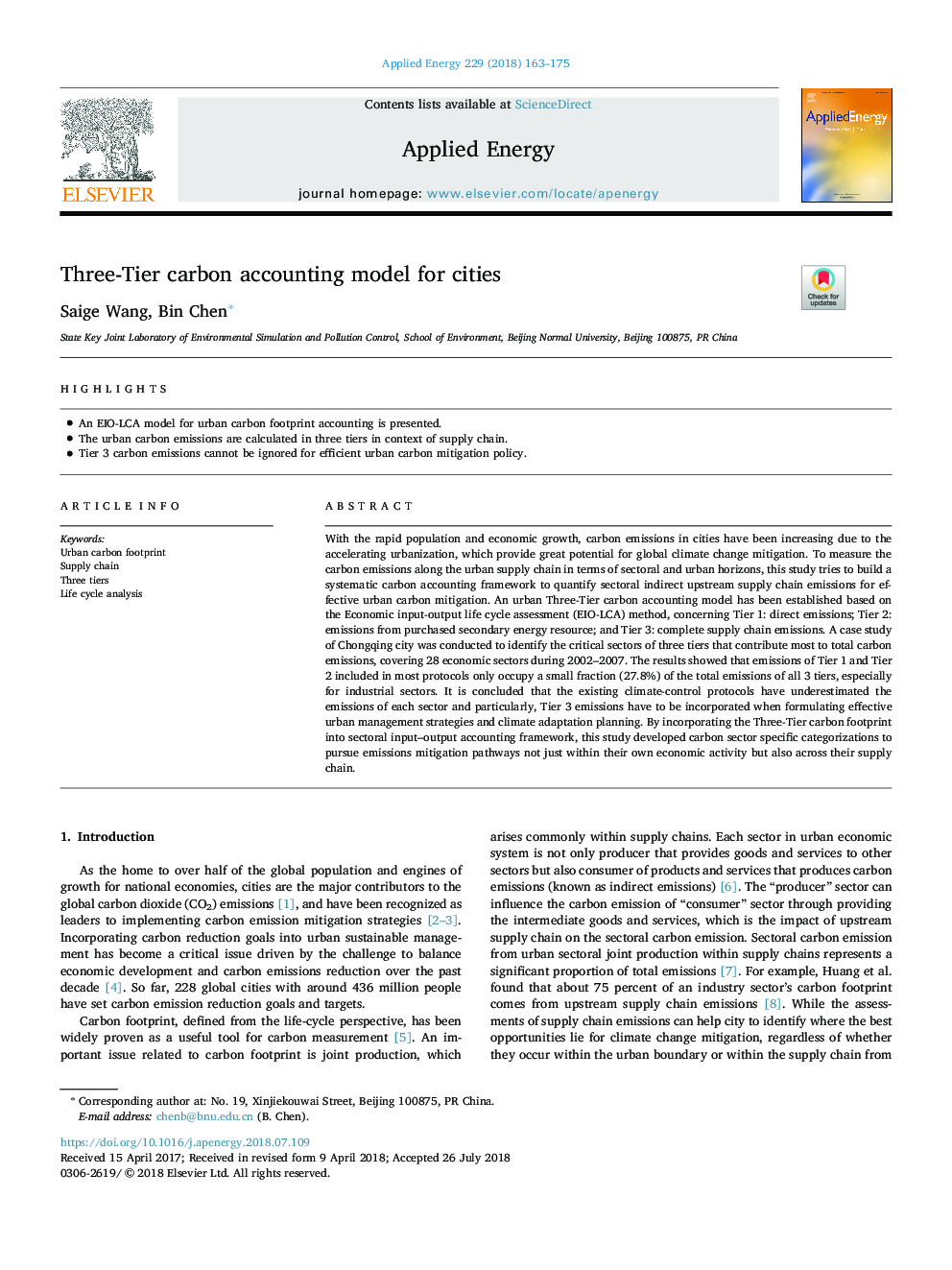| Article ID | Journal | Published Year | Pages | File Type |
|---|---|---|---|---|
| 6679641 | Applied Energy | 2018 | 13 Pages |
Abstract
With the rapid population and economic growth, carbon emissions in cities have been increasing due to the accelerating urbanization, which provide great potential for global climate change mitigation. To measure the carbon emissions along the urban supply chain in terms of sectoral and urban horizons, this study tries to build a systematic carbon accounting framework to quantify sectoral indirect upstream supply chain emissions for effective urban carbon mitigation. An urban Three-Tier carbon accounting model has been established based on the Economic input-output life cycle assessment (EIO-LCA) method, concerning Tier 1: direct emissions; Tier 2: emissions from purchased secondary energy resource; and Tier 3: complete supply chain emissions. A case study of Chongqing city was conducted to identify the critical sectors of three tiers that contribute most to total carbon emissions, covering 28 economic sectors during 2002-2007. The results showed that emissions of Tier 1 and Tier 2 included in most protocols only occupy a small fraction (27.8%) of the total emissions of all 3 tiers, especially for industrial sectors. It is concluded that the existing climate-control protocols have underestimated the emissions of each sector and particularly, Tier 3 emissions have to be incorporated when formulating effective urban management strategies and climate adaptation planning. By incorporating the Three-Tier carbon footprint into sectoral input-output accounting framework, this study developed carbon sector specific categorizations to pursue emissions mitigation pathways not just within their own economic activity but also across their supply chain.
Keywords
Related Topics
Physical Sciences and Engineering
Energy
Energy Engineering and Power Technology
Authors
Saige Wang, Bin Chen,
